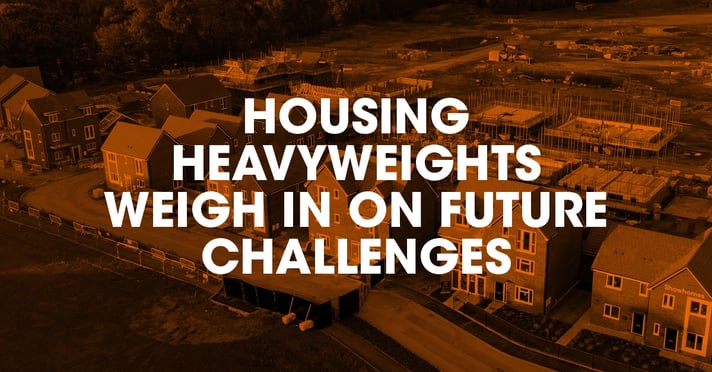The challenges shaping the future of housing
Costs
Builders will be familiar with the problems stemming from costs, and they’re having an impact on built housing as well. Housing providers are weighing their options on how to handle the rising price of delivering services, knowing that they can’t pass all costs on to their customers.
Paul Price claimed that the true price of inflation is much higher for the construction industry, closer to 38% over the 11-15% reported about consumer prices, showing the scale of the difficulties hitting the trade.
Those costs make it difficult for the entire sector, particularly for new builders with upcoming regulations changes that will be very likely to increase costs for builders, all against the backdrop of the ongoing crisis of procuring enough goods and people to operate.
The building trade wants to do the right thing for their social, environmental, and professional responsibilities, but prices costs are a significant issue on delivering on three fronts at once.
Supply
As we pointed out earlier in this piece, there’s a clear consensus that the UK is lagging behind on its supply of new housing.
According to Paul Price, 85% of the housing stock that will be available in 2050 (the UK’s net-zero target date), has already been built.
According to Price, the UK is need of 90,000 new social housing homes a year for fifteen years to clear the social housing backlog, but the industry is closer to 20,000 a year.
The return of right-to-buy has been met with concerns on this panel and others. Releasing social housing into private stock could further deplete and already stressed supply of housing, one that would likely remain stressed even with a one-for-one replacement.
Quality
The crisis also highlights an issue that affects new builders – trying to maintain quality without unfairly passing costs on to customers, or passing on costs that customers can’t afford.
A subject that came up multiple times across the panel, particularly from James Prestwich was trade-offs. Rising costs, and what kind of costs housing providers and builders can pass on to customers, will likely mean trade-offs in some areas.
As costs go up, and suppliers put caps on what kind of price rises they can pass on to buyer, then there has to be some compromise in what’s delivered while maintaining that price.
New housing builders will, surely, relate to this issue. Maintaining quality will be more difficult as the cost of building new homes goes up with updated FLOS and future home standard updates while the price of procuring all materials marches ever upwards. While no developer or housing owner would set out to reduce quality, material economic issues present great challenges in carrying on as normal.
Simon Nunn also floated the prospect of struggling local authorities and housing associations selling off their stock, which would affect the supply of available social housing. Nunn also opened the possibility that spiraling costs could force housing associations to merge, which could have further knock-off effects on investment in housing expansion and the quality of services that could be offered to customers in housing now.
James Prestwich, arguing that the current conditions might be the most challenging environment for housing ever, stresses that working on quality is central to the answer of dealing with the overlapping crises affecting the housing sector.
Trust
Media coverage has accelerated the public’s ability to spread awareness for failings in housing, according to James Prestwich. What was once an issue that would be picked up by a regional newspaper, can now reach hundreds of thousands of people inside one day.
While he did stress that these incidents are few and far between, and not reflective of the quality of the overall UK housing stock, and can undermine the great work that builders and housing providers offer.
James also argued that a renewed dedication to quality, and creating a culture of excellence in housing, is a central part of restoring the trust in the public and their housing providers.
In the difficulty is opportunity
As ever, wringing our hands about challenges is no good without acknowledging opportunities to address them and improve.
Modern Methods of Construction (MMC), and innovating building approaches, are a big growth area and opportunity for the UK to answer some of the difficulties we face.
Embracing MMC could help us reduce building costs, make it cheaper to hit emissions targets, and offer cash-stressed tenants cheaper homes to insulate.
At the same time, contemporary building techniques let us do less environmental damage while building and use less energy, prompting a brilliant social, environmental, and professional opportunity for building.
Greater government engagement was also highlighted as an opportunity, which was concurred by the government’s representative at the talk Emran Mian. During his address, he acknowledged the benefits that new housing bring to areas.
Developing new housing brings jobs, not just in the construction of a building itself but the community, economy, and maintenance that supports that housing.


Have your say